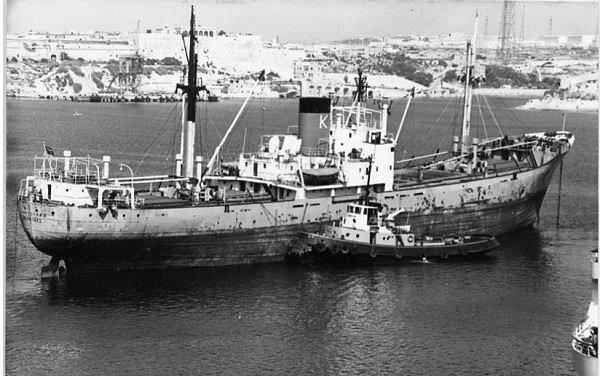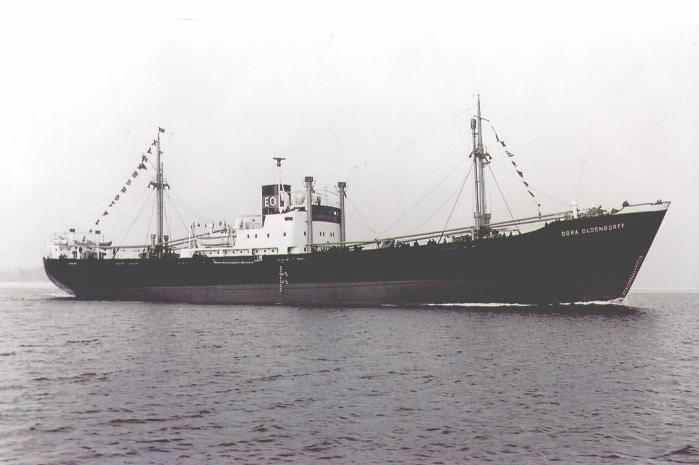The Chrisoula K began life as the 3,720 or 3,807 GRT Cargo Ship Dora Oldendorff built at Orenstein, Koppel and Luebekker, Lübeck, Germany for Egon Oldendorff’s growing post-WWII fleet. Launched 16 December 1953 and completed early in 1954, she was 98 meters in length, 14.8 meters in beam, 9 meters in draught, with a single 2,700 bhp 9-cylinder diesel engine from Masch, Augsburg-Nuermbuer (MAN), Augsburg, Germany, connected to a single shaft for a maximum speed of 13.5 knots.
The Dora Oldendorff was sold in 1970 (Company Unknown) and was renamed the Anna B. She was sold again in 1979 to the Clarion Marine Company, Piraeus, Cyprus, and renamed the Chrisoula K.
Loss of the Chrisoula K
In late August 1981, the Chrisoula K got underway from Italy with a cargo of floor tiles destined for Jeddah, Saudi Arabia. The ship, under the command of Captain Kanellis, made safe passage across the Mediterranean Sea, transit through the Suez Canal, and navigated through the narrow confines of the Straits of Suez. One source states that Captain Kanellis was on the bridge for the entire passage from Italy up to this point and then turned the helm over to another officer in order to retire for some well-earned rest. True or not, the ship continued on its passage south, steaming at full speed, when it struck the northeast corner of Sha’ab Abu Nuhas at position 27°34’50″N; 33°55’30.
There was apparently enough damage to the hull of the ship that it was considered a total constructive loss (See Lloyd’s List entry for 01 September 1981). The 21-man crew was picked up by the Egyptian Navy based at Hurghada and delivered to Suez shortly afterwards. The ship soon began to take on water and, with her bow firmly embedded in the reef, began to sink by the stern. Eventually she settled on the bottom at the base of the reef in 20-30 meters of water.
Diving the Chrisoula K
The bow of the ship, also known as the “Tile Wreck“, used to be clearly visible on top of the Sha’ab Abu Nuhas Reef. However, due to years of wave action and exposure to the elements, there isn’t much left of this part of the ship to see above the water (in fact, practically nothing!).
One need’s calm seas in order to get to the wrecksite. The main part of the ship lies in a fairly upright position at the bottom of the reef, while the stern has keeled over almost completely onto its starboard side. Penetration into the engine room located in the stern section is possible, but a bit disorienting due to the ship’s stern being on its side. There is much to see in the engineering compartments as the ship was not salvaged. Flashligts, flashlights, and more flashlights are recommended. Silt-out conditions are also another consideration here….watch your finning!
Back outside of the wreck, the rudder and propeller are still in place at 26-28 meters. Going shallow along the port side of the ship’s hull there is a gap between hull plates which allows access into the ship’s holds where the cargo of tile still remains. All-in-all, this is another one of those wrecks that makes the Red Sea such a unique diving destination.








